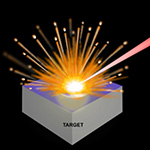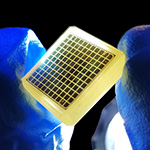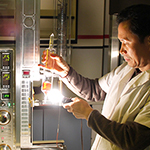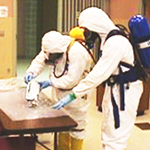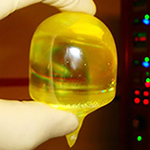February 21, 2020
Third Brimrose AOTF Spectrometer Selected as Part of NASA’s Moon Mission
The VIPER Rover pictured here is scheduled to carry our Brimrose AOTF-NIR spectrometer for mapping the Moon’s South Pole. (Courtesy NASA)
Sparks, MD—NASA has selected a third Brimrose spectrometer to search for water on the Moon’s surface. This spectrometer, like the first two, will rely on Brimrose’s acousto-optic tunable filter (AOTF) technology and operate over a wide spectral range.
While the first two spectrometers are to be used solely for trying to locate water, the third will also be used for mapping purposes in the vicinity of the Moon’s South Pole. It is part of NASA’s Volatiles Investigating Polar Exploration Rover, or VIPER. Our spectrometer will be installed on the VIPER Rover.
VIPER represents the first resource mapping mission on another celestial body, according to NASA.
The three spectrometers are being designed as part of the NASA Ames Research Center’s involvement in NASA’s Artemis project. More specifically, they are included as part of the NIRVSS program, a NASA Ames-centered program that stands for Near Infrared Volatiles Spectrometer System.
Brimrose’s inherent ruggedized design includes solid state technology and no moving parts. Each spectrometer must successfully complete environmental qualification testing, including random vibration tests that simulate the launch environment, and in thermal-vacuum testing at NASA Ames, during which the instrument operates in lunar-like conditions.
Brimrose’s core AOTF technology is being used in the spectrometer. Using AOTF, an RF signal is applied to a TeO2 crystal, producing acoustic waves within the crystal. There are a variety of advantages to this technology, including the fact that its pass-band wavelength can be tuned without the need for moving parts. TeO2 is also a very efficient optical material, and AOTFs have an extremely high optical throughput compared to other dispersive optics. The instrument can use the Sun or an included infrared lamp as its light source. The instrument spans the 1300-4000 nm range, a range that allows for the identification of H2O bands.




